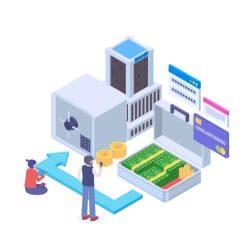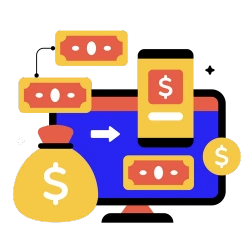While businesses once operated largely in physical cash, the exchange of actual dollar bills is no longer a leading payment method. Just like the rest of the modern world, the payment process has quickly become heavily electronic, and ACH transfers are a leader in this ever-growing industry. In fact, 29.1 billion ACH payments valued at $72.6 trillion occurred in 2021 alone. To ensure your business stays at the top of the game, it is imperative that you understand the ACH process. In this article, we’ll break down ACH returns and specifically focus on return code R39: Improper Source Document.
What is an ACH payment?
In order to understand ACH returns, you first need to understand exactly what ACH payments are. Automated Clearing House (ACH) payments are a payment method involving bank-to-bank transfers. ACH transfers are entirely electronic with no sort of physical transaction involved in the process. These payments occur throughout the United States among banks and other financial institutions. The banks involved in each payment represent their clients and transfer funds from one account to another. The ACH network oversees this process and ensures funds are properly transferred to and from each institution.
What is an ACH return?

The ACH network permits returns of ACH transfers under specific circumstances. The network’s guidelines lay out the return process. Certain criteria must be met to allow for the return of an ACH payment. However, an ACH return occurs when for whatever reason the ACH network was unable to collect funds from one bank account and properly transfer them to another. If a bank requests an ACH return, no funds transfer until the associated banks, payment processors, or financial institutions address the problem and work to fully resolve the issue according to the directions laid out by NACHA.
What is NACHA?
The National Automated Clearing House Association (NACHA) is the governing body that oversees the ACH network. The association designates the standards of the ACH payment process as well as the ACH return process. NACHA developed the list of reasons an ACH transfer may be returned as well as how each individual problem should be addressed. The return process relies heavily on NACHA’s 85 ACH return codes.
What is an ACH return code?
NACHA’s list of ACH return codes works to define each return. When a bank or financial institution issues a return, a return code appears. Each ACH code consists of three characters. The first character of an ACH return code is the letter ‘R’ which symbolizes ‘return.’ The following two digits indicate the reason for the return, how to resolve the issue, and how long it typically takes to fix that particular problem.
Note: All ACH return codes are standard across industries.
What Does ACH Return Code R39 Mean?
Return code R39 appears when the related ACH payment contains an improper source document. The source document used, like a check, for example, may be ineligible for conversion. There is also the possibility that the source document indicates the bill was already paid. Regardless of the specific issue, the source document presented for payment was incorrect. Until this problem is resolved, the transfer will remain incomplete.
Formal definition
ACH return code R39 translates as ‘Improper Source Document.’
Solutions to Fix R39 Return Code

Return code R39 occurs in both consumer and non-consumer transactions. This issue typically resolves within 2 banking days. However, merchants cannot handle this return code on their own. The problem requires fixing at the banking level. Both the merchant and customer in the transaction should permit their associated banks to properly address the issue at hand.
If the ACH return process delays the delivery of goods and/or services to the customer, the merchant may step in and politely explain the disruption in payment. Remain calm, and try to assure your customer that the financial institutions initiating and receiving the ACH transfer are working to process the return. If the timeframe of resolution is not acceptable, offer any alternative accepted payment methods to your customer.
Final Thoughts
While ACH return code R39 may sound confusing, remember that your bank will be more than capable of handling the problem. It may also ease your mind to note that return code R39 is less common than other return codes. This does not mean you should refrain from familiarizing yourself with all 85 existing ACH return codes. Don’t forget that ACH return codes can be used to a merchant’s advantage. If you understand the meaning behind each code, including the associated issue and how to properly resolve the problem, you help to ensure a smooth process for your business’s ACH payment processing.




